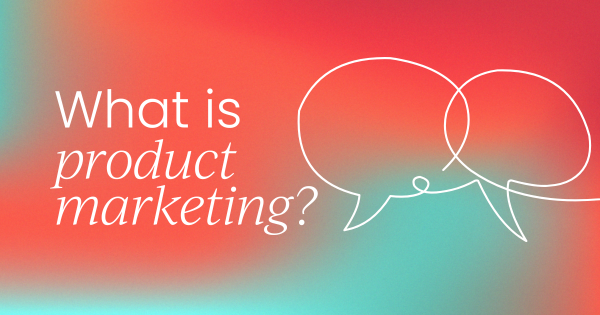What do stand-up comedy and product messaging have in common?
More than you might think! Both are about creating connections, making things memorable, and getting a reaction from your audience.
While I might not be quitting my day job as a Director of Product Marketing anytime soon, I’ve spent 17 years doing improv, hitting open mics, and performing stand-up for fun. I’ve also been in a Netflix comedy special – admittedly, I was in the audience, but it still counts for something!
In this article, I want to share four key principles from stand-up comedy that can help elevate your messaging. Whether you’re pitching to your boss, crafting a campaign, or just trying to get your point across, these principles can make all the difference.
Let’s dive in.
Essential #1: Structure is critical
We already know that how we say something matters. That’s just as true in comedy as it is in messaging.
Let’s start simple. Think about a kid you know that’s around five to seven years old. It could be your daughter, your nephew, your godchild. Ever heard them tell a knock-knock joke? I’m guessing yes.
Even if the joke makes no sense or the punchline falls flat, they get the structure. They understand there’s a setup and a payoff. That’s because we’re pattern-seeking machines. We love patterns, and that structure is the foundation of any good joke. It’s also the foundation of great messaging.
Take this Mitch Hedberg joke:
“I used to do drugs. I still do, but I used to, too.”
It's simple, but genius. The first line sets a premise. You, as the audience, immediately make an assumption: “Oh, he doesn’t do drugs anymore.” Then the punchline comes in and flips the framing – “I still do.” It surprises you. That’s the payoff.
Now, let’s look at a longer form of the same principle. John Mulaney tells this story about his lawyer parents. Here’s the short version:
“My parents are both lawyers, they are BOTH lawyers, and sometimes they would be like lawyers with us when we were kids. I remember one time I was in bed, and my dad came in and he said, ‘Goodnight, John! Did you brush your teeth?’ and I said ‘Yes,’ but here’s the thing – I hadn’t.
“He says, ‘John is this your toothbrush?’ and I said ‘Yes,’ and he said, ‘So we agree that this is your toothbrush? John, this toothbrush is bone dry. You lied to me!’
“I did not lie. I said that I brushed my teeth; I never specified that I brushed my teeth tonight! And if the court reporter reads back my remarks, you will see that I did not perjure myself.”
It’s courtroom logic as comedy – and it works because the story builds tension, has structure, and ends with a satisfying resolution.
How to structure your messaging like a joke
You apply this structure to your marketing. Here’s a line I wrote for some web copy:
Double your campaigns, not your workload. Stop guessing which campaigns to prioritize.
That’s the setup. You’re likely already filling in the blanks. Then comes the payoff:
Build twice the campaigns in half the time – freeing you to focus on building the personalized experiences your customers demand.
It’s not a joke, obviously, but it follows the same rhythm. Set the premise, then deliver the value.
Hot tip: Swap “and then” for “so then”
You know those people who tell stories that just ramble on forever? “I went to the airport, and then I went through security, and then I got to the gate, and then I had to pee, and then…” There’s no movement. Just a list of events.
Now contrast that with “I went to the airport, and they opened my bag – so then I knew I was in trouble.”
See the difference? “So then” moves the story forward. It creates momentum, not just a string of facts.
Trey Parker and Matt Stone, the creators of South Park, swear by this rule. They crank out a brand-new episode in just seven days – written, animated, delivered. Every single week. It’s timely, funny, and sharp because they refuse to sit on a traditional nine-month production cycle. Why? Because by the time it’s out, it wouldn’t be relevant anymore.
So, how do they structure their stories? With this golden rule:
Something happens – and something else, but there’s a conflict. Therefore, here’s the outcome.
That structure gives every episode – and every message – shape and momentum. It creates tension, introduces stakes, and delivers a resolution.
And that’s the key. Messaging shouldn’t try to solve everything in one paragraph. I’ve done that before – written messaging that tried to solve the entire world in the first line. Guess what? It sucked.
Your job is to move the reader forward, one beat at a time. Once you’ve done that, then you’ve earned the right to say more.
Essential #2: Kill your darlings
We all have ideas, lines, or jokes that we’re attached to. It could be a line we’ve spent hours crafting or a concept we’re convinced will work. But just because we love something doesn’t mean it will land with the audience. The challenge often comes from our ego or that inner voice (or our boss’s voice) telling us to stick with it, even when we know it’s not working.
The "kill your darlings" rule in writing tells us that sometimes the things we’re most attached to need to be cut. It’s not easy, but letting go of what doesn’t serve the message often results in something stronger and more impactful. In the end, it’s about putting the audience first, not holding onto ideas out of pride or attachment.
Less is more: The art of simplifying
If your messaging isn’t landing, step back and look at it. Are there words in there that don’t really add to the meaning?
We all know the culprits: “revolutionary,” “game-changing,” and the like. If you scroll through LinkedIn for long enough, you’ll see them everywhere. These words clutter the message, make it harder to go from point A to point B, and diminish your credibility.
Let me give you an example from the world of comedy. Jerry Seinfeld spent two years perfecting a pop-tart joke, and here’s how it started:
"It was the 1960s, and I was a little kid watching television commercials."
That was the first draft. He eventually rewrote it to:
“I was seven watching TV.”
By trimming the unnecessary details – like the year – Seinfeld made the joke shorter and sharper. You don’t need to know it was the 1960s to understand the context. And “I was seven” (rather than “I was a little kid”) gives you a clearer mental picture.
It’s a perfect example of how cutting unnecessary words can improve your messaging. You don’t have to explain everything upfront. Sometimes, less is more.
I ran into the wordiness problem with a headline I was working on. Here’s the original draft:
Transform your business objectives into high-performing segments, letting marketers focus on strategy while our agents handle the data science.
That was a mouthful, right? The second draft?
Build better audiences.
The second line is the real point. It’s all I need to convey upfront. The first version tries to do too much at once, while the second version gets to the heart of the message. I don’t need to explain everything right away; I just need to make them want to keep reading.


















 Follow us on LinkedIn
Follow us on LinkedIn




.svg)